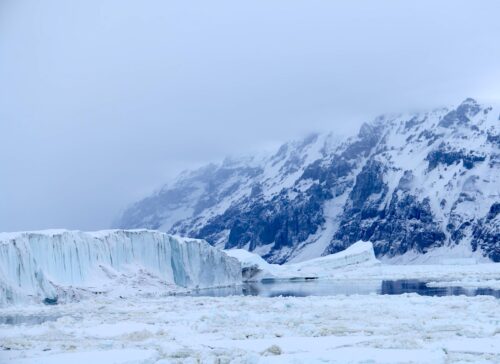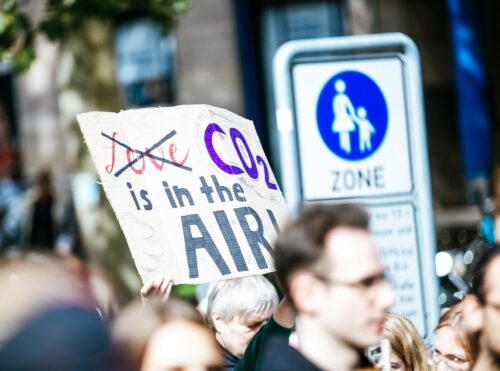 The catastrophic blazes that thrive in eastern Arizona’s thickly forested yet arid landscape have a way of fizzling once they jump from the dense national forests to the Apache reservations, and that’s not by chance.
The catastrophic blazes that thrive in eastern Arizona’s thickly forested yet arid landscape have a way of fizzling once they jump from the dense national forests to the Apache reservations, and that’s not by chance.
On a scorching summer day with fire danger at the extreme level, forestry superintendent Michael Gutierrez and his crew spent the morning chain-sawing the overgrown junipers surrounding Seneca Lake on the San Carlos Apache Indian Reservation.
Soil conservationist Paul Buck discussed his experiments in fighting tough alligator juniper using the terrestrial version of the herbicide Round-Up, and forest manager Dee Randall explained how the scrubby trees could be converted into slabs and sold for furniture as part the tribal timber business.
Such wildfire prevention techniques might alarm environmentalists, but the San Carlos Apache have their own agenda: Keep the forests healthy, protect their sacred sites, and bring back the plants and grasslands that flourished before the reservation was established in 1934.
“The Apaches believe the health of the people is tied to the health of the land,” said Mr. Randall. “We want the reservation to look the way it did in the pre-reservation days. Everything we do is just to help us get a more healthy forest. That’s the whole goal.”
The Apache learned the hard way. The two worst fires in Arizona history — the 2011 Wallow Fire and the 2002 Rodeo-Chediski Fire — erupted in the backyard of the Fort Apache Indian Reservation, twin sister of the San Carlos reservation and home of the White Mountain Apache Tribe.
Robert Lacapa, a White Mountain tribal member who recently retired after a life in fire and forestry, said the tribe overhauled its approach after the Rodeo-Chediski Fire blackened 468,638 acres of national forest and tribal lands.
“After Rodeo-Chediski, what we did differently is we looked at the areas that survived the burn,” said Mr. Lacapa, a former Bureau of Indian Affairs forest manager at the Fort Apache Agency. “A lot of them survived because we had done fuel treatments — prescribed burns, timber harvests, timber stand improvements, multiple projects.”
The conclusion: “Multiple treatments are more effective than one. You need to do multiple treatments,” Mr. Lacapa said.
The strategy paid off nine years later during the Wallow Fire. The most destructive fire in state history, the Wallow charred 538,049 acres in Arizona and New Mexico but faded when it crossed into the reservation’s tidier woodland mosaic.
“Biggest wildfire in Arizona history couldn’t burn Fort Apache Reservation,” The Arizona Republic said in a July 2017 headline.
It was the same with the Rattlesnake Fire, which started in April on the Fort Apache side and spread to the San Carlos. Nearly all of the damage was on the neighboring Apache-Sitgreaves National Forest. The wildfire ultimately burned 26,072 acres at a cost of about $11 million.
Steve Best, the Apache-Sitgreaves forest supervisor, credited the tribe for putting in the work to tackle the needles, branches and fallen trees that litter the forest floor to the tune of 2 tons per acre per year.
“On the Rattlesnake Fire, it didn’t burn hardly any on the White Mountain Apache side because it burned up to their prescribed burn and pretty much went out,” said Mr. Best. “If we would have treated our side of the fence at the same time they treated their side of the fence, the whole thing might have been just a little fire.”
Tale of two forests
Divided by the Salt River, the Fort Apache to the north and San Carlos to the south might be better described as small countries. Both about the size of the Big Island of Hawaii, the reservation terrain ranges from the Sonoran Desert to mixed-conifer forests to Mount Baldy at 11,421 feet, with enough winter snow to support a ski resort.
From the ground, the millions of forested acres belonging to the Apache tribes, the Apache-Sitgreaves and the Tonto National Forest look like one massive, contiguous woodland, but Mr. Lacapa said the aerial perspective tells another story.
“If you were to look at a Google Earth view, you can tell actually where the fence line is because of treatments,” he said. “It’s more dense on [the Forest Service] side and less dense on the other.”
The Apache-Sitgreaves holds an average of 700 Ponderosa pines per acre on its 2.1 million acres with densities ranging from 300 to 3,000 trees. Before settlements began in 1865, there were about 24 to 124 pines per acre, said Randy Fuller, natural resources staff officer.
“Our current densities are anywhere from 10 to 20 times their historical densities,” said Mr. Fuller.
The Apaches have sought to bring their pine stands closer to 50 trees per acre. At Seneca Lake, Mr. Gutierrez said, he wants to reduce the number of junipers per acre from about 50 to eight.
One reason for the difference: The Apaches have greater control over their forests. More than 200,000 acres of the Apache-Sitgreaves is designated wilderness, tightly packed woods that cannot be thinned, burned or otherwise managed by law except in emergencies.
The rest of the national forest can be treated subject to approval under the National Environmental Policy Act, but projects are frequently held up by litigation or appeals. Although tribal forest projects also must receive National Environmental Policy Act clearance, they don’t receive the same scrutiny from the public, which in the tribe’s case consists of fellow Apache.
“Our constituency is on the reservation, and we have about 16,000 tribal members,” said Mr. Lacapa. “Nobody from New York. Nobody from California. Our primary interest group is right here. Unfortunately for the Forest Service, they can get somebody back East or back West that can put a stop to any of their NEPA.”
That worries him. “The public has really limited their effectiveness in using prescribed burns and harvesting as tools,” said Mr. Lacapa. “And that’s really bad for us. It’s not just about what we can do here locally [on the reservation], but on a landscape basis.”
Logging in the national forests has plummeted in the past 40 years, by 80 percent in some areas, but not in the reservation woods. The White Mountain Apache Tribe operates the largest sawmill in the region and the San Carlos are working to update their aging mill while they continue to log and sell timber.
San Carlos tribal timber specialist Marvin Victor described the logging operation as a win-win for the tribe.
“It’s important to us not only because we have this connection to the Earth as Apaches, but we can create revenue off of it,” said Mr. Victor. “The way I look at timber sales from a fuels standpoint is that we’re thinning out the forest by taking the larger-diameter trees and making revenue off of that. Fire prevention-wise, it works out perfectly.”
Like many other Apache, Mr. Victor has a background in firefighting. Most of those working in forest management were once “hotshots,” elite firefighters who battle the nation’s worst wildfires. The San Carlos tribe operates one of the most famous crews, the Geronimo Hotshots.
Reducing forest density has additional benefits. Trees are enormous water hogs, which means reducing their numbers helps keep the woods from drying out. More water means healthier trees, and healthier trees are more resistant to the bark beetles that have ravaged millions of acres throughout the West.
“Beetles fly, and their flight distance is really quite short,” said Mr. Randall. “The needles have to be almost touching. We had a pretty good infestation, so we had to go in and salvage a lot of flagging, infested trees. Again, we’re just trying to mimic nature.”
Their forests are sources of pride. Jere Classay, a White Mountain member, couldn’t help but brag as he showed off the features of the shady Corduroy timber unit, a pristine stand high in the mountains of the Fort Apache reservation.
“This is our end state,” said Mr. Classay, a Bureau of Indian Affairs fuels specialist. “It has all our treatments: logging, mechanical and prescribed fire. Widely spaced trees, high crowns, few ladder fuels. Imagine if a wildfire started here. It would be hard to crown.”
Protecting significant forests
All this comes as music to the ears of Interior Secretary Ryan Zinke, who has made it his mission to fight destructive wildfires with more aggressive forest management, locking horns with environmental groups fighting his agenda by blaming the blazes on global warming.
The Apache would argue that the positions aren’t mutually exclusive. Several attribute the fire-prone conditions to climate change, along with previous mismanagement, such as the Forest Service’s “douse it by 10 a.m.” suppression strategy that ran until the 1960s and the overgrazing that began when the Army controlled the land.
Unlike environmentalists, however, the tribes believe the solution lies with more forest management, not less. The Apache were burning, logging and thinning long before Mr. Zinke issued his 2017 directive on combating wildfires “through robust fuels reduction and pre-suppression techniques.”
As Mr. Lacapa put it, “We want to carry out the timber before nature does it for us.”
Clouds of dust billowed from Mr. Randall’s boots as he hiked a dirt path to the tribe’s commercial forest, where crews in recent years completed a pulpwood sale, followed by a timber harvest, thinning and a prescribed burn.
“Ideally, you want to mimic what a wildfire would take out. We want to try to treat the pockets of high-density stands,” he said. “This stand here, it’s really nice and open. We’ve got the grassy understory that’s coming up, and tree growth is starting to take off.”
As for the Forest Service side, “It’s still really thick,” he said. But the tribes plan to do something about it.
The Apache is working with federal land managers to reduce wildfire risk on ancestral lands that fall outside the reservation boundaries, including in the national forests, as part of the recently launched Reserve Treaty Rights Land program.
Alan Rose, the program’s fire planner for the San Carlos, said the goal is to improve collaboration between the two sides.
“What I’ve noticed working on the Tonto for 30 years is that we will not do projects because they border the reservation,” said Mr. Rose. “You didn’t want to do a project because there wasn’t a good, easy way of cutting it off at the fence. So a lot of the border area has been neglected more than the land around it.”
With the Reserve Treaty Rights Land projects, which also require National Environmental Policy Act approval, “we can burn at the same time, and it actually saves time and money,” said Mr. Best. “We don’t have to worry about getting on each other’s property.”
As the political battle over wildfire prevention rages, the trend in recent years has been to focus prevention efforts on creating “defensible spaces” in the wildland-urban interface, fireproofing communities where destructive blazes would threaten lives and property, as opposed to the backcountry.
That strategy has never quite caught on with tribal members, who view their backwoods stands as more than remote collections of trees. For the Apache, the forest has important cultural significance. It’s their home as much as any house, condominium or apartment.
“They say, ‘We need to protect life and property,’ and life, yes, property, yes. But here, our property is our wildlife, our water, our forest,” said Mr. Randall. “That’s what we value.”
Read more at Washington Times



















Meanwhile in BC with their 600 fires burning a record acreage, the Indians were all busy protesting about a pipeline, sitting back on booze and dope while their sacred forests burned. Seems like if it involves WORK they want nothing to do with it.
I inquired with Greenpiece, Tides Canada and jerks like Dogwood, asking how many members they had on the firelines. I am still waiting for a response and there are now reports of snow at higher elevations. Guess they are busy depositing cheques from Soros.
From the article, “what we did differently is we looked at the areas that survived the burn” This is using real world data to make decisions. It obviously works. That is very different than the environmentalists who use unrealistic ideals to force their decisions on others. This goes beyond forest management and includes using garbage in garbage out computer models to force their agenda on the world.
Indians logging the timber this will make the greens hair curl after all their suppost to be at one with nature according to the greens and hollywood’s mindless rantings